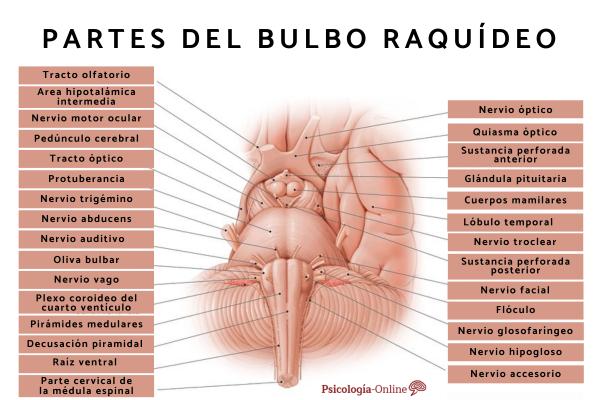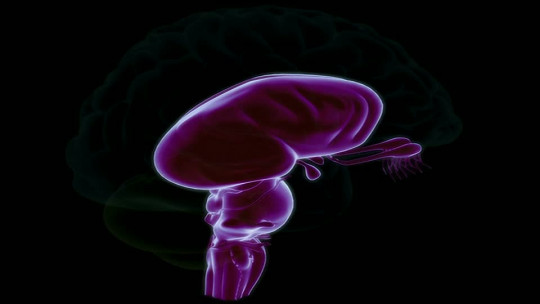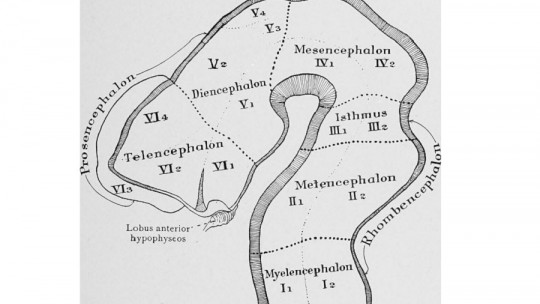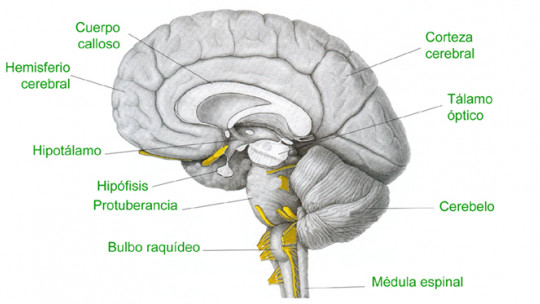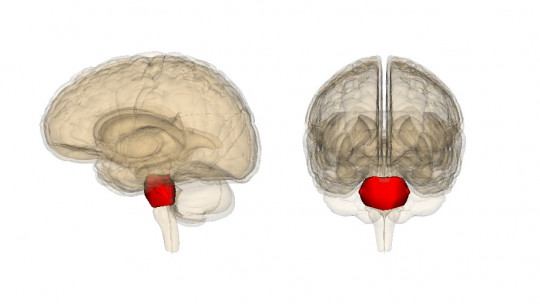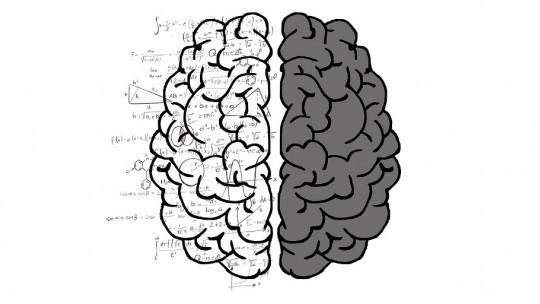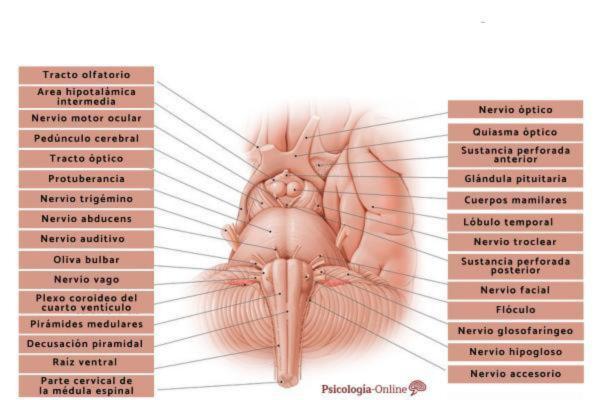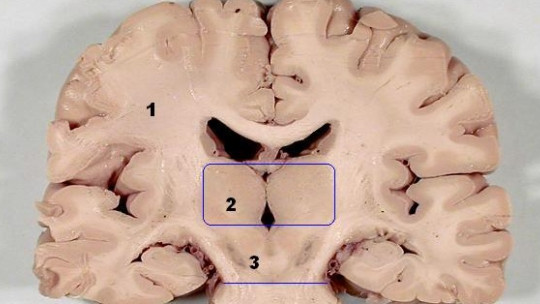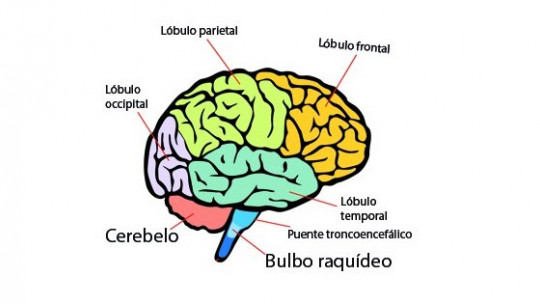In our daily lives we carry out countless actions automatically and it is not common for us to stop and think about what mechanisms are activated in our brain. The brainstem is one of the most important parts of the brain when it comes to regulating the basic functions of the body. This is made up of 3 parts: midbrain, pons and medulla oblongata. The latter is a structure that is only three centimeters long and two centimeters wide. However, it is vitally important for our survival. Are you interested in knowing what it is about? Find out in this PsychologyFor article in which we will delve deeper into What is the medulla oblongata, its location, parts, characteristics and functions
Definition and location of the medulla oblongata
He medulla oblongata (also called medulla oblongata) or usually only “medulla” is located in the myelencephalon. Specifically, it is located between the pons of the brainstem or annular pons , above, and the spinal cord below. As mentioned previously, it stands out for its shape, since it is a truncated cone with lower vertex approximately three centimeters long and two wide.
In the following article, you will find more information about the parts of the brain and their functions.
Parts of the medulla oblongata and characteristics
The medulla oblongata or medulla oblongata is the superior continuation of the spinal cord. It is divided by a median raphe, and on each side it shows anterolateral and posterolateral grooves, through which the roots of the hypoglossal nerves (XII) and the glossopharyngeal (IX), vagus and accessory nerves (XI) emerge. The grooves divide the bulb into anterior, lateral and posterior regions which consist of the pyramids, the olives above and the beginning of the lateral columns of the spinal cord below, and the lower half of the floor of the IV ventricle in the upper portion, as well as the beginning of the posterior columns of the spinal cord under.
A section through the upper half of the bulb shows a convoluted U shape and consists of sheets of gray matter dorsal to the pyramids, the inferior olivary nuclei. Many fibers exit the open, medial ends of these groups of nuclei to penetrate the opposite inferior (caudal) cerebellar peduncles. The parts of the medulla oblongata and their characteristics are explained schematically below:
External configuration
Let’s look at the external parts of the medulla oblongata:
- Previous face: the pyramids separated by the anterior median sulcus located in the midline. This groove is interrupted by motor decussation. Outside the pyramids are the bulbar olives. The olives are separated from the pyramids by the pre-olivary groove. This face is crossed by the vertebral arteries that later fuse and form the basilar artery or trunk.
- Upper side: presents a posterior middle sulcus in the midline, continuation of the posterior medullary sulcus bordered, on each side, by the posterior cord, subdivided in turn by a small paramedian sulcus into the cord of Goll or gracile fasciculus and the cord of Burdach or cuneiform fasciculus.
- Side face: posterior to the olives, in which the glossopharyngeal (IX), vagus (X) and accessory or spinal (XI) cranial nerves originate.
Internal configuration
Regarding the internal parts of the medulla oblongata, we find:
- bulbar pyramids: In the pyramids are located the bundles of nerve fibers that connect the cortex with the medulla oblongata and the spine. Here pyramidal decussation occurs and a crossing of the nerve fibers from one side to the other occurs. This explains why the cerebral cortex is responsible for controlling movements to the opposite side of the body.
- Lemniscus: transmit information between the brain and the spinal cord. They are responsible for head position movements or eye movements, among others.
- Olive grove complex: three are considered: the main olive and the ventral and dorsal accessory ones. They receive afferents from the cerebral cortex, basal ganglia and midbrain mainly through the central tagmental fasciculus. It sends its output mainly as olivocerebellar fibers. They regulate voluntary muscle movements.
Cores
We continue with the parts of the medulla oblongata. Next we will see that the medulla oblongata or medulla oblongata is made up of the following nuclei:
- Trigeminal nucleus: transmits information about pain, temperature and touch.
- Dorsal vagus nucleus: control the enteric nervous system.
- Ambiguous nucleus: the nerves begin: vagus, glossopharyngeal and accessory. They are responsible for the muscles of the pharynx and larynx
- Nucleus of the solitary tract: regulates the sensitivity of the viscera and has a fundamental role in taste perception
Functions of the medulla oblongata
The medulla oblongata is vital importance for the survival of the human being. His injury would produce great deficits in our daily lives. Below are some of its functions. Let’s see which ones there are:
- Control the heart rateblood pressure, blood pressure and vasoconstriction.
- Participates in nutrition and digestion. Regulating the secretion of substances gastric and swallowing.
- Control the breathing.
- It also controls the cough and the sneeze.
- It is important in maintaining the consciousness and attention. It is a critical mechanism involved in deficit hyperactivity disorder (ADHD).
- It is in charge of the transfer of information between the peripheral and central nervous system.
Importance of the medulla oblongata
As seen in this article, the medulla oblongata or medulla oblongata is a very important part of our brain. The fact that he is involved in the impulse transmission in the brain makes it indispensable.
What consequences would injuries have to the medulla oblongata? Injury to this organ would mean a failure in the functions mentioned above, such as, for example, possible cardiac or respiratory arrest.
This article is merely informative, at PsychologyFor we do not have the power to make a diagnosis or recommend a treatment. We invite you to go to a psychologist to treat your particular case.
If you want to read more articles similar to Medulla oblongata: what it is, parts, characteristics and functions we recommend that you enter our Neurosciences category.
Bibliography
- Carlson, N. R. (2014). Behavioral Physiology (11th Edition). Madrid: Pearson Education.
- Del Abril Alonso, A,. Ambrosio Flores, E., de Blas Calleja M. A, Caminero Gómez, A, A. Lecumberri, C. G and de Pablo González, J, M. (2016) Fundamentals of Psychobiology1st edition, Madrid: Sanz y Torres

